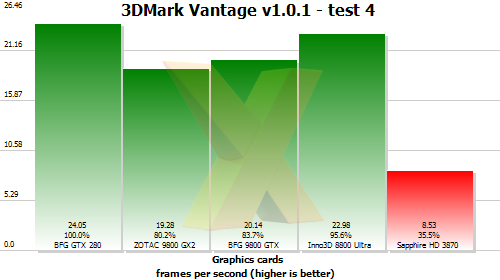3DMark Vantage, performance and feature tests
Kicking things off, we take a look at synthetic benchmarks via the recently-released 3DMark Vantage.You'll notice that no Radeon HD 3870 X2 scores are included. We couldn't get the card to complete the test without rendering errors, even with the hotfix driver. This is not some conspiracy against ATI, and we'll include benchmark results as soon as we have them. Expect it to score near-double that of the Radeon HD 3870.

The GTX 280 looks suitably good in this test - some 77 per cent faster than a GeForce 9800 GTX and 9 per cent speedier than the twin-GPU GX2.
Lots of shading, texturing and memory bandwidth all help here.

Test four, GPU Cloth, stresses the vertex shading, geometry shading and stream-out features of the hardware, where stream out is used to recycle the cloth vertices, according to Futuremark.
The BFG 280 doesn't run away with it here, contrary to expectations, and the stream out feature, detailed on page three, doesn't provide the boost we thought it might. Shaders not being used to the limit, perhaps?

Test six, Perlin Noise, is a technique used for procedural texturing. As such, it's highly maths-intensive to compute in a pixel-shader and stresses the arithmetic (read grunt) of a GPU.
Grunt is what the GTX 280 has in reserve, and that's why it's particularly suited to a parallel computing architecture.
How about some real games? Certainly!









